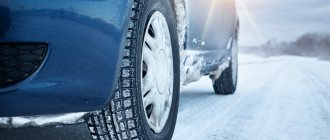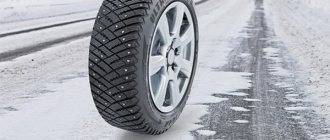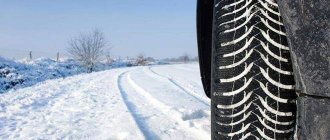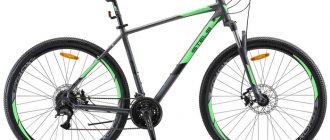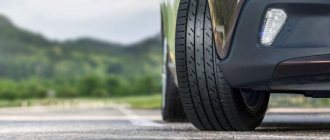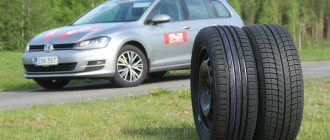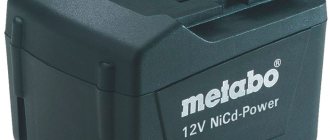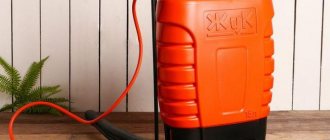Table: Top 12 best tires
| Model | Best Features | Diameter, R | Run Flat | Maximum speed index | |
| Pirelli Ice Zero | studded according to reviews | 14/15/16/ 17/18/19/ 20/21/22 | optional | H (up to 210 km/h) | Find out prices |
| Bridgestone Blizzak Revo GZ | studless tires according to reviews | 13/14/15/ 16/17/18/ 19 | No | S (up to 180 km/h) | Find out prices |
| Continental IceContact 2 | studded 2021 - 2017 | 13/14/15/ 16/17/18/ 19/20/21 | optional | T (up to 190 km/h) | Find out prices |
| Continental ContiWinterContact TS850 | studless 2021 - 2017 | 12/14/15/ 16/17/18/ 19/20/21 | optional | W (up to 270 km/h) | Find out prices |
| Continental IceContact 2 SUV | studded for crossovers | 15/16/17/ 18/19/20/ 21 | optional | T (up to 190 km/h) | Find out prices |
| Bridgestone Blizzak DM-V2 | studless for crossovers | 15/16/17/ 18/19/20/ 21/22 | No | T (up to 190 km/h) | Find out prices |
| Nokian Tires Hakkapeliitta 5 | inexpensive | 13/14/15/ 16/17/18/ 19/20 | optional | T (up to 190 km/h) | Find out prices |
| Cordiant Winter Drive | budget (Velcro) | 13/14/15/ 16/17 | No | H (up to 210 km/h) | Find out prices |
| Nokian Tires Hakkapeliitta 8 | studded, “Behind the wheel” test | 13/14/15/ 16/17/18/ 19/20/21 | optional | V (up to 240 km/h) | Find out prices |
| Nokian Hakkapeliitta R2 | studless, “Behind the wheel” test | 15/16/17/ 18/19/20/ 21 | optional | R (up to 170 km/h) | Find out prices |
| Nokian Tires Hakkapeliitta 9 | studded, Autoreview test | 16/17/18/ 19/20/21/ 22 | optional | T (up to 190 km/h) | Find out prices |
| Nokian Tires Hakkapeliitta R2 SUV | studless, review "Autoreview" | 14/15/16/ 17/18/19/ 20/21 | optional | R (up to 170 km/h) | Find out prices |
Pirelli Ice Zero - the best winter studded tires according to reviews (2019 - 2020)
In the ranking of studs for winter, pride of place is occupied by Pirelli Ice Zero tires with effective braking and good stability. They hold the road well at speed, behave confidently on steep snow-covered inclines, brake and stop quickly and completely, after which the car starts moving without problems.
No tendency to skid, good grip on compacted and loose snow and ice. The rubber is soft, quite noisy, but not critical. The noise is noticeable mainly on asphalt surfaces, but not audible on snow. A large number of studs, which results in reduced braking speed on asphalt. But it confidently handles any road.
Pros *
- braking;
- directional stability;
- grip on ice, snow (loose, compacted);
- holds any road.
Minuses *
- noisy, on asphalt;
- reduced braking quality on asphalt due to a large number of studs.
Rating of the best winter tires 2018-2019
So, which tires are best for winter? TOP winter tires will help answer this popular and pressing question.
. Recently, focusing only on ratings compiled by popular automobile magazines has become illogical. The thing is that foreign ratings do not take into account Russian regions with a harsh climate. In Europe, the use of studs is also prohibited, and all friction tires are designed for mild European winters. The Russian car enthusiast will be given an idea of the highest quality “shoes” for cars by the people’s TOP.
Nokian Hakkapeliitta R2+ SUV
The Finnish tire manufacturer Nokian is deservedly at the top of our TOP. This company develops and adapts car tires to Russian operating conditions, taking into account the characteristics of specific car models. For example, Nokian Hakkapeliitta R2 SUV tires are best suited for SUVs and crossovers. It is also better to equip passenger cars with winter tires from Nokian. An ideal option for owners of sedans and hatchbacks is the Hakkapeliitta R2 without the SUV prefix, which indicates its intended use as an off-road vehicle.
Advantages of Nokia Hakkapeliitta R2 + SUV:
- moderately soft and elastic;
- excellent road holding;
- are not afraid of getting into a rut;
- provide the best traction of wheels with the road surface;
- do not emit excessive noise;
- reliable and wear-resistant.
We can say that the Finns produce standard tires for passenger cars and off-road vehicles. For example, the WR A4 model, developed using a special rubber compound called Performance Traction Silica.
Continental ContiViking Contact 6
It is impossible to ignore and not include products from the German manufacturer Continental in the rating of the best winter tires. During the production of tires, this company uses new elastomers, and the Ice Contact model studs are made in the shape of a truncated pyramid. Advanced technologies allow the Germans to produce tires of amazing quality and reliability, which won the hearts of Russian car enthusiasts back in the 90s of the last century. On such wheels you can safely plow through snow-filled areas. For urban conditions, the best choice is the ContiViking Contact 6 model.
It boasts the following advantages:
- soft and quiet rubber;
- does not tan at subzero temperatures;
- provides the car with a high level of controllability;
- effective grip on dry road surfaces;
- reduces the possible braking distance.
The only, and perhaps the main drawback of ContiViking Contact 6 is rapid wear.
Due to their excessive softness on our roads, they can quickly become unusable. But with a measured driving style, these tires will serve faithfully for many years.
Michelin Pilot Alpine 5
The best winter tires can be found among the range of models from the French manufacturer. Michelin offers the Russian driver a range of high-quality tires that can withstand the harshest weather conditions of the northern regions. Among the entire nomenclature list, it is impossible not to mention the Pilot Alpin 5 model. These tires are made of a specially manufactured compound, which allows the Pilot Alpin 5 not to lose its performance characteristics at any temperature. With these tires, the car will perform well on icy roads and on asphalt surfaces during a thaw. With French “shoes” the car does not lose directional stability.
Advantages of Pilot Alpin 5:
- efficient water drainage;
- high resistance to clogging of channels with snow;
- provide proper directional stability.
You can safely install such tires on your car with the onset of the first frosts. Due to the directional tread with a lamella pattern that serves as a drainage channel, the tires cope well with water flows and throw off snow well. Designed for SUVs and crossovers, which are specifically designed for active driving on snowy roads.
Goodyear Ultra Grip
The largest American tire manufacturer also takes care of motorists in northern countries. The company's newest development is the Ultra Grip model, designed for snowy regions with harsh winters: Canada, Scandinavia, Russia. This studded tire has the best qualities, providing the car with confident acceleration and a high level of grip. The manufacturer managed to increase the Ice Arctic's grip on snowy roads thanks to the unique Multicontrol Ice technology.
Pros of the model:
- The best ratio of price and quality;
- tires provide confident acceleration of the car;
- proper handling and directional stability.
Bridgestone Blizzak
Which winter tires are best? This question begins to worry absolutely every car owner with the onset of the first frosts. It is impossible to give a full and detailed answer to this exciting question without considering the new tires from the Blizzak 2021 model range from the famous Japanese manufacturer. If you prefer to choose “shoes” for your car among non-studded options, and don’t know which winter tires to choose, pay attention to the Bridgestone Blizzak 2018. As you know, studded tires are banned in Japan, so manufacturers there focus all their efforts on producing “Velcro” tires. " And it’s worth saying that the Japanese make great products.
Bridgestone Blizzak 2021 is different:
- resistance to increased wear;
- low noise level;
- efficient drainage;
- provide a high level of car controllability.
We can say that the Bridgestone Blizzak 2021 is an ideal option for everyday city use. But when traveling outside the city limits, be prepared to encounter the first serious difficulties.
These winter tires are prone to slipping on snowy sections of the road due to the shallow tread, which is heavily clogged with snow.
Yokohama Ice Guard IG60
When it comes to Japanese manufacturers, it is impossible to ignore the famous company Yokohama, which also specializes in the development and production of high-quality studless tires. One of the best studless winter tires today is Ice Guard IG60.
This tire has many advantages:
- give the car high cross-country ability;
- serve for reliable traction of the vehicle's wheels on wet and icy asphalt.
The best tire for use on Russian roads. Many domestic drivers have already tried Ice Guard IG60 in practice. The results exceeded all expectations. Thanks to the complex tread pattern, effective drainage is possible and the channels are not clogged with snow. All these properties certainly have a positive effect on the handling and directional stability of the car. This rubber is purchased with great pleasure by owners of “green” cars, because the production technology of Orange Oil S also involves the use of environmentally friendly materials: the introduction of a mixture of orange peel oil into the rubber composition.
Pirelli Ice Zero
Italian manufacturers are known for producing studded tire models. Pirelli is a well-known company that has gained a positive reputation and has released the Ice Zero model, manufactured using the latest technology. With such tires you can drive in snow and slush. Ice Zero tires are equipped with double-core studs and a classic pattern with more lamellas than competitors' designs.
Ice Zero is different:
- relatively inexpensive price;
- securely fixed spikes;
- effective braking on any type of road surface;
- tenacity to ice.
What are your weaknesses?
During break-in, the Ice Zero makes a lot of noise, but after traveling 1 thousand kilometers on the tire, the extraneous noise in the cabin disappears. If your region does not have the harshest winters - in December and January it can easily rain torrentially - then it is better to opt for other models presented in the rating. Because Ice Zero feels insecure in snowy conditions and does not provide the car’s wheels with normal traction.
Nokian Hakkapeliitta 8 SUV
This is a studded version of the Hakkapeliitta R2 SUV model.
They also fit perfectly on the wheels of crossovers and SUVs. The main purpose is active use in harsh winter conditions. But, unlike the Hakkapeliitta R2, this type of tire boasts a large selection: sizes from 15 to 21 inches. This tire has won the “best studded tire” category several times. In general, an ideal option if you live in the northern outback.
Pros:
- standard grip on both snow and ice;
- Brakes effectively on dry asphalt;
- do not make noise, ensure smooth running of the machine;
- remove water and slush.
In addition, the Hakkapeliitta 8 SUV is wear-resistant. When purchasing them, you can be sure that this is a long-term purchase. After all, during the production of the model, advanced tire production technologies are used.
Gislaved Nord Frost 200
Who else but the Scandinavians knows what great winter tires should be? Gislaved is the oldest Swedish manufacturer, which over the years of its activity has produced a dozen cool models of winter tires. There is a car plant in Kaluga that produces specially adapted Nord Frost 200 tires for Russian drivers. This is far from the newest model, but to this day Nord Frost 200 is in the highest positions in almost any rating. This is because the manufacturer took care of the drivers and produced amazing winter tires.
Advantages of Nord Frost 200:
- don't make noise;
- decent maneuverability;
- give the car a high level of grip on any surface.
The only drawback of the Nord Frost 200 is that the tires are too soft.
If you hit an asphalt pothole or catch the edge of a curb, you can cause an unpleasant side cut of the tire. On small tires the pattern works averagely, but on rubber scaled for crossovers it performs its duties much more effectively.
Michelin X-Ice North
Rounding out the ranking of the best is another studded option from Michelin – X-Ice North. Without a doubt, their main advantage is a deep, directional tread, which Russian car owners are constantly looking for. But this tire is not for everyone. The manufacturer has endowed X-Ice North with a very soft rubber compound; it does not stiffen when negative temperatures prevail, but as soon as winter lets up, the X-Ice North becomes too soft. Which, of course, cannot but affect the handling and wear resistance of the tires. Loss of spines is not excluded. But if you are used to the fact that there is a cold and snowy winter outside your window both day and night, take a closer look at Ice North.
What are the results of the rating?
When choosing the best tires for a car, a number of objective and subjective factors should be taken into account. It is important to pay attention not only to the brand and advantages of a particular model. It is important to keep in mind that some tires may be ideal for one car and not for another. In regions with warm and not capricious winters, studded options are not always appropriate. It’s better to stick with, for example, the Japanese Ice Guard IG60 or the Finnish Hakkapeliitta R2. But to conquer snowy off-road conditions and huge snowdrifts, you should choose between the Hakkapeliitta 8 or the Pirelli Ice Zero.
Bridgestone Blizzak Revo GZ – the best winter non-studded tires according to reviews
Among velcro tires, the leading place in the ranking is occupied by Bridgestone Blizzak Revo GZ winter tires. They became the best in their category according to reviews and tests. Studless tires have a powerful sidewall, which provides excellent handling. There is practically no noise: quiet, soft, holds the road, and takes turns.
Studless tires are an ideal option for cities where winters have little snow but are cold. Comfortable tires with which you can confidently drive your car at any speed. In the snow they behave almost the same as studded ones. They react clearly and practically without delay to steering wheel turns.
Pros *
- quiet;
- softness;
- acceleration;
- high-quality grip;
- controllability;
- braking on compacted snow and asphalt.
Minuses *
- braking on ice is worse;
- sufficiently rigid passage of uneven asphalt;
- At temperatures above zero there is a feeling of floating tires.
3. Continental IceContact 2 - the best winter studded tires (2018 - 2019)
Quiet, comfortable tires with Continental IceContact 2 studs. Produced in Russia using German equipment, the quality of the tires is high, comparable to their European counterparts. At the same time, the price is affordable. They hold the road, there is no sudden stalling when skidding on ice, they are controlled smoothly and confidently. Good handling both on asphalt and on snow or ice; there is no roll when cornering.
It brakes excellently on any surface and holds the road, including in icy conditions. Well balanced, practically no rutting. There is no characteristic noise of unbroken studs, while there are more studs on the tire itself than on noisier analogues, and the studs do not fly out. The rubber is soft, but still holds the course perfectly.
Pros *
- handling on any track;
- lack of rolliness when turning and changing lanes;
- absence of characteristic noise of spikes;
- road traction.
Minuses *
- some noise, but no discomfort;
- price.
Our rating of winter tires for the 2018-2019 season
- Guys, I took this off last night! — our photographer Dima boasts in the morning.
Indeed, even the aborigines will not remember such bright flashes of the northern lights. And Andrei Mokhov and I slept through everything exhausted. After all, in a week on the tracks of the Swedish Arctic Falls training ground we need to test 22 sets of winter tires! But in the final protocol, 21 models of size 205/55 R16 remained. Why? I'll tell you now.
How are tires selected for our comparison tests? Before testing, we send requests to tire companies asking them to provide one or two sets. And since the tests are carried out at the end of the winter season - this year in mid-March - some companies already have new models ready for production. We take these with pleasure - in order to provide our readers with up-to-date information about these tires in the fall. But we reserve the right to check its authenticity - to conduct a so-called doping test. This year we also had to resort to checking - and for good reason.
We carried out the tests at one of the seven test sites at the Arctic Falls test site: here, on an area of about five hectares, all the tracks necessary for winter tire testing are compactly laid out
The list of participants in our test included 13 studded and nine non-studded models. The bias towards studs is due to statistics, because more than 70 percent of Russian drivers choose “nails”. The hot new products in this class are the Korean Hankook Winter i*Pike RS2 tires and the Japanese Yokohama iceGuard iG65 tires. Both of them followed the “Scandinavian” path of development - they increased the number of studs following the example of the successful models Continental IceContact 2 and Nokian Hakkapeliitta 9. But where is Michelin with the new model X-Ice North 4, which also noticeably increased in studs? Alas, they refused to provide us with these tires, and we did not find them on sale.
Ice is a very capricious coating. To obtain objective results, the measurement cycle must be repeated several times.
Among the beginners, there are also those who have chosen the traditional number of studs - 115-130 pieces per 16-inch tire. These are the Japanese models Toyo Observe Ice-Freezer, Firestone Ice Cruiser 7 and the Chinese-Singapore GT Radial IcePro 3, as well as the Russian Cordiant Snow Cross 2 tires, which are not included in the final protocol.
On ice and snow, measurements on each set of tires are performed 12-16 times. There are half as many races on asphalt: the surface is more stable
In the non-studded class, the main intrigue is the duel between the new Continental VikingContact 7 and Nokian Hakkapeliitta R3. Or maybe fresh Asian models - Yokohama iceGuard iG60 and Hankook Winter i*cept iZ2 - will intervene in their dispute? By the way, it is here, at the Swedish Arctic Falls test site (translated from English as “Arctic Falls”), that Bridgestone and Yokohama rent sites for their winter tests.
Overhang (the protrusion of the studs above the tread surface) is the most important parameter for winter tires. If it is less than a millimeter, the tires will probably fail on ice
Well, we had to come to Sweden twice. The first time we sat there for a week, running the entire testing program on snow and ice. And then, already in April, on the roads that had just been cleared of ice, they measured the braking distance on wet and dry asphalt - and assessed the acoustic comfort and smoothness of the ride. Well, then, using the traditional system of converting results into points, we summed up the results.
The full version is available only to subscribersSubscribe now
I'm already subscribed
4. Continental ContiWinterContact TS850 - the best winter studless tires (2018 - 2019)
Among studless winter tires, the leader is the Continental ContiWinterContact TS850. According to reviews, these are truly quiet, comfortable tires with good handling and grip. It holds the track in heavy snow, and on ice there is also good grip for non-studded tires.
Excellent tires for those who prefer silence and comfort when driving in the winter season. The tires are soft, comfortable, without a sporty bias; they drive on asphalt without snow at almost summer speeds. Slower in deep snow or slush. Directional stability is above average, response to steering movements is moderate.
Pros *
- quiet;
- good handling;
- grip with the road;
- comfort.
Minuses *
- some sizes are difficult to find;
- not suitable for driving in deep snow or slush; they skid;
- average directional stability.
Cordiant Snow Cross
An inexpensive tire with a directional tread pattern from the Russian company Cordiant. The tire brakes well on ice and snow, and also provides confident acceleration, handling and cross-country ability (and is in many ways superior to more expensive premium models). On dry and wet asphalt its results are a little more modest, but overall the car’s behavior is stable and safe.
Continental IceContact 2 SUV – studded tires for crossovers and SUVs
If you have a crossover or jeep, pay attention to the Continental IceContact 2 SUV winter tires. The rubber holds up well on any surface, including icy conditions. Quiet, soft, the steering response increases with it, the chassis works better.
Moderately noisy winter tires, comfortable, a good option for both big cities and trips out of town. High-quality braking on dry and wet asphalt, in this quality there are practically no differences with studless tires. It runs and brakes well in the snow, and has good cross-country ability in slush. It walks and brakes confidently on ice and packed snow, there is no rutting on the asphalt, and there are no lateral stalls.
Pros *
- low noise;
- road grip;
- softness;
- holds the road in ice and snow;
- reliability.
Minuses *
- high price;
- Soft sidewall but still durable.
Continental IceContact 3
One of the latest models in the ranking, presented in 2019.
Unlike its asymmetric predecessor, the new product received a directional tread pattern and largely improved performance: 7% higher resistance to aquaplaning, 9% better handling on dry asphalt and 3% better grip on ice.
In tests, the tire demonstrates its best qualities on ice and snow, while on dry and wet asphalt it lags behind many competitors, but maintains stable and predictable vehicle behavior. An excellent choice for safe winter use.
Bridgestone Blizzak DM-V2 – studless tires for crossovers and SUVs
To ensure safety while driving in winter, owners of jeeps, crossovers, and SUVs prefer studless tires from a well-known brand - Bridgestone Blizzak DM-V2. Driving on such cars is often more aggressive, on ruts, potholes, and different surfaces. The tires behave well on wet asphalt and dry surfaces, and feel confident in slushy snow. Cup protectors allow you to walk in the snow without slipping.
The tires remain soft at any temperature, which allows them to remain silent in any weather.
“Swallows” small cracks and potholes on the asphalt. On clean and smooth ice, the Velcro has a fairly long braking distance; at temperatures above -10, it is very slippery on ice and compacted snow and can skid. But in frosts of -15 or more, the grip is more confident on ice, on compacted snow, and on any surface.
Pros *
- value for money;
- holds any road;
- excellent grip;
- behaves well in the snow, in slush;
- soft at any temperature;
- silent.
Minuses *
- drifts on compacted ice;
- it’s hard to get out of a rut;
- long braking distance on ice.
Goodyear UltraGrip Ice Arctic
A relatively old model in the rating, released in the winter season of 2012/2013 and still not losing popularity among drivers.
Despite the small number of studs (about 110 pcs), the tire brakes very well on ice and snow, and also provides confident traction on dry and wet asphalt. A well-deserved place in the ranking due to
Nokian Tires Hakkapeliitta 5 – inexpensive studded tires for winter
In the budget segment of studded winter tires, Nokian Tires Hakkapeliitta 5 have proven themselves with a long service life. The tires do not have spikes coming off, and the tires hold the road well in mixed driving styles. The tread does not wear off for a long time, the studs do not allow air to pass through.
The studded Nokian Tires Hakkapeliitta 5 handle equally well on ice and snow; on asphalt they brake a little worse, which is understandable for this type of winter tire. The rubber has excellent build quality and the installation of studs, allowing it to hold the road well even in part-time drive. They have a long service life and do not wear out for a long time.
Pros *
- holder;
- long service life;
- high-quality assembly and installation of studs;
- handling (ice, snow - compacted or loose);
- The stud does not allow air to pass through.
Minuses *
- relatively high cost;
- Brakes worse on asphalt than on ice and snow.
How to choose R16 winter tires?
Winter tires differ from summer tires in many respects. Rubber for them is softer, so it does not harden in the cold and does not lose performance characteristics. Also, winter tires are characterized by a higher tread and a dense arrangement of sipes for stable handling in difficult winter weather conditions.
The basic characteristics in the selection of tires are::
- Presence of thorns . Contrary to popular belief, not only studded tires, but also friction (without studs) tires are suitable for winter. Models of the first type are suitable for loose snow and ice, and the second - for slush.
- Tread type . It can be Scandinavian or European. Tires of the first type have an increased number of lamellas, so they are ideal for use in regions where there are often very severe frosts in winter. European type tires are more suitable for mild winters.
- Tread design . It can be asymmetrical and symmetrical (directional and non-directional). A symmetrical non-directional pattern is considered the most universal, although an asymmetrical tread is also suitable for winter.
Cordiant Winter Drive – budget studless winter tires (Velcro)
Among studless tires, the so-called Velcro tires, in the budget category, according to reviews from car owners, Cordiant Winter Drive took pride of place. Almost silent, it moves and brakes well in slush, loose and compacted snow. On ice it behaves somewhat weaker, however, in city conditions good handling is maintained.
Completely predictable behavior of a car with Cordiant Winter Drive tires, abrasion-resistant, soft, with good tread, but at temperatures from 5 degrees above zero it begins to “float”. An excellent option for a quiet winter ride; it handles well in the snowdrifts.
Pros *
- predictable behavior on various surfaces;
- does not wash off;
- soft;
- good tread;
- acceptable cost.
Minuses *
- braking on ice is worse;
- somewhat noisy for a non-studded shoe;
- floats at temperatures above +5.
Nokian Tires Hakkapeliitta 8 – studded tires: test by Za Rulem magazine
Nokian Tires Hakkapeliitta 8 tires were tested by Za Rulem magazine and named the best studded tires for winter driving. It has diamond-shaped spikes, and not just pins, it behaves confidently both on the asphalt and in ruts, it does not lead or throw. When cornering, the tires behave smoothly and predictably.
On fresh wet snow, on frozen ice crust, compacted snow and ice it behaves confidently and predictably, brakes clearly and confidently along a predictable trajectory. When cornering, the rear axle can drift a little, but it is quite controllable. On ice it behaves the same as on asphalt within a reasonable speed, there is noise in the range from 60 to 110 km/h.
Pros *
- diamond-shaped spines;
- no rutting;
- cornering control;
- does not float on asphalt;
- holds the road (ice, snow, porridge).
Minuses *
- price;
- noisiness.
Nokian Hakkapeliitta R2 – studless tires: test by Za Rulem magazine
Quiet studless tires for driving in winter, one of the best according to tests by the magazine “Behind the Wheel” - Nokian Hakkapeliitta R2. It holds the road well on ice, freshly fallen snow and slushy snow; it behaves confidently when changing lanes and parking, including in parking spaces that have not been cleared of snow.
The rubber is strong, small holes, joints, bumps and tram tracks are not felt at speed, they pass very smoothly. An excellent option for winter tires for use in urban areas. In warm weather above +5, the car reacts worse to steering wheel turns, and when overtaking, ruts appear. However, rubber wears out and wears out quite quickly, but this does not have much effect on the “stickiness”.
Pros *
- quiet;
- soft;
- sustainability;
- holds the road well;
- high speed index.
Minuses *
- relatively fast wear;
- price.
11. Nokian Tires Hakkapeliitta 9 – studded tires: Autoreview test
According to tests carried out by the Autoreview magazine, Nokian Tires Hakkapeliitta 9 became the best winter studded tires. Yakohama tires hold the road well, are soft, and ride on snow as if they were on asphalt. They behave confidently when cornering at high speed and during emergency braking.
The car goes uphill on these tires without slipping, and does not skid when turning on ice. The rubber is not afraid of ruts, including icy ones, the studs work 100% on ice, the handling is comfortable and predictable. It also handles well in slushy snow and has a short braking distance. Tires for snowy roads. At low speed there is no noise, it appears when the car travels over 120 km.
Pros *
- no rutting;
- no noise at medium speeds;
- holds the road;
- emergency braking;
- holds turns confidently.
Minuses *
- price;
- The break-in period is longer than with similar tires.
No. 1 – Nokian Tires Hakkapeliitta 9 SUV
Price: 16,690 rubles
The first place in our ranking of the best winter studded tires goes to the Nokian Tires Hakkapeliitta 9 SUV premium tires. It is intended for SUVs, profile width - 215, 225, 235, 245, 255, 265, 275 cm, profile height - 35, 40, 50, 55, 60, 70 cm. Symmetrical tread pattern, maximum speed index - up to 190 km /h.
Every SUV owner expects confident road behavior and responsive handling from their vehicle. So Nokian Tires Hakkapeliitta 9 SUV tires can provide all this. It is very soft, so all the irregularities that you may encounter on Russian roads will be invisible. At high speed it does not make noise, rides confidently, and has maximum traction.
12. Nokian Tires Hakkapeliitta R2 SUV – studless tires: review “Autoreview”
Nokian Tires Hakkapeliitta R2 SUV tires drive along a snowy road at speeds above 100 km. They also perform well on the road with freshly fallen snow, in slush, on clean asphalt and even in puddles. Very quiet and soft tires, grips the road with any asphalt surface.
The car has good directional stability and a short braking distance. Nokian Tires Hakkapeliitta R2 SUV tires are suitable for the middle zone with mild winters, because the quality of handling decreases on purely winter surfaces and conditions. At the same time, with such tires the car goes through deep snow.
Pros *
- quiet;
- cross-country ability in snowdrifts;
- confidently keeps track;
- cross-country ability on ice, slush, and puddles.
Minuses *
- price;
- increased fuel consumption.
Choosing the right winter tires
For their manufacture, a special chemical composition is used to provide winter tires with the required properties. Car tires need to be changed depending on the season: it is recommended to change your car to winter tires when the temperature does not rise above 5-7 C during the week. To choose suitable winter tires, you should follow some recommendations.
Key characteristics of good winter tires
Run Flat Technology
Decide on the budget you are willing to spend on purchasing a set of winter tires. As a rule, the cost of tires is determined by the brand and country.
Winter tires can be studded or fractional, that is, non-studded (Velcro) - this is probably the main selection criterion. Moreover, non-studded ones can be European and Scandinavian. Each type is suitable for its own operating conditions:
- Studded - high-quality grip on the road surface and braking. They are intended for use on hard ice, an option for regions where winters are cold and harsh, with frequent ice conditions and for use outside the city. Such rubber is noisy, which is explained by the presence of spikes; it quickly wears off on asphalt and loses its characteristics.
- Studless Scandinavian tires are recommended where the winter is long and there is a lot of snow. They are not afraid of snowdrifts and snow drifts. Road traction is provided by treads: the more lamella cavities there are, the better the grip on the snow surface. There are also lugs along the outer edge of the tread, which provide the maximum contact patch. Recommended for use at temperatures significantly below -0 and below, on roads with a lot of snow. Such tires are soft and therefore not suitable for driving on ice, and on dry asphalt their wear resistance sharply decreases and they float.
- Studless tires of the European variety are an ideal choice for use in regions with mild winters, where sleet or rain often falls. They walk through slushy snow and are safe at high speeds. But in icy conditions and on compacted snow, the road grip characteristics are worse, when driving on dry asphalt at low temperatures, with slushy snow.
It is also important to look at the manufacturing date of winter tires, since the shelf life of winter tires is 5 years. Wear resistance indicator, the index is indicated on the sidewall.
It is better to choose the maximum indicator. Also, modern car tires are equipped with Run Flat technology: even when the tire deflates, it remains on the rim and remains able to bear the weight of the car.
Another indicator is the speed index: each tire model is designed for use in the speed range in which optimal adhesion of the rubber to the road is guaranteed.
Manufacturers
Previously, Scandinavian brands were considered the best producers of winter tires. But Russian companies produce tires with qualities that are not inferior to either their Scandinavian or European counterparts. Among Russian brands it is worth noting Amtel, Cordiant, Kama, Nokian.
Among European manufacturers of winter tires, Barum, Continental, Matador, Michelin are popular, and Japanese ones are Bridgestone.
Moreover, Nokian occupies a leading position in ratings based on reviews, as well as tests in car magazines, leaving French, Japanese and other competitors far behind. At the same time, it cannot be said unequivocally that Japan or France make tires for the Russian winter better than domestic manufacturers.
Based on the above rating, as well as recommendations for choosing tires, every car enthusiast will be able to make the right choice.
How to choose winter tires
Winter tires, unlike summer tires, are specially adapted to low temperatures, high loads and driving on snowy and icy roads. They are divided into studded , equipped with special metal inserts (spikes) and non-studded (Velcro tires).
Studded tires
In our country, the most popular are studded tires. They are distinguished by medium rubber hardness and the presence of special inserts (spikes) made of durable alloys.
Studded tires are great for icy , snowy and snow-packed roads. It can be used for both city and country driving.
The design features of the tires are as follows:
- tire material – medium hard;
- the presence of metal spikes - the protrusion, as a rule, is 1.2 - 2.3 mm;
- the presence of zigzag lamellas that provide strong grip and stability.
- sinuous, wave-like tread pattern.
can be noted in studded samples :
- excellent grip on snowy and icy road areas;
- good braking qualities.
The disadvantages are:
- noisy tires while driving;
- negative impact on the road surface;
- slight increase in fuel consumption.
Non-studded tires
Non-studded models are used much less frequently in our country, due to the impossibility of their use in the harsh Russian winters.
Velcro are used primarily for the city, providing excellent maneuverability and speed of movement , which is clearly an advantage over their studded counterparts.
These tires are equipped with sipes attached to the outer part of the tire, which improves traction. The thicker the lamella, the better the grip - it's simple.
Tires are divided into two types:
- Scandinavian - used for driving on snowy and ice-covered roads. They are made from soft rubber and are equipped with drainage channels and flexible slats. The height of the tread pattern is no more than 8 mm, it is made in the form of rectangles and diamonds. They are mainly used in changeable weather conditions. Suitable for the southern and some central regions of the country.
- European - used exclusively within the city at low subzero temperatures. They are distinguished by a network of drainage channels on the tread and powerful lugs. They provide reliable grip on wet or sleet-covered roads, but are not suitable for snowy and icy areas. They have a good effect on the maneuverability of the car and are low noise.
Advantages of rubber - Velcro:
- Excellent for driving on dry and wet asphalt.
- do not reduce vehicle controllability;
- The tire material does not lose its properties at high temperatures.
- practically no noise;
- do not damage the road surface.
The disadvantages of this type include:
- inability to use on heavily icy roads
- long braking distance on ice;
- cross-country ability on snow is lower than that of studded samples.
Selection rules
To choose the right winter tires, you need to rely on:
- operating conditions of the vehicle – road and climatic conditions;
- your driving style;
- tire manufacturer - it is better to opt for proven brands;
- rubber shelf life – the tire cannot be stored for longer than 5 years;
- the seller has relevant certificates for the products.
The service life of branded winter tires is a maximum of 5-6 seasons , while its Chinese counterparts are 2-3 . Tests show that even after one season of operation, the braking properties of tires are reduced by at least 10%.
Therefore, in any case, it is better to buy new tires , even inexpensive ones, than to buy used ones.
